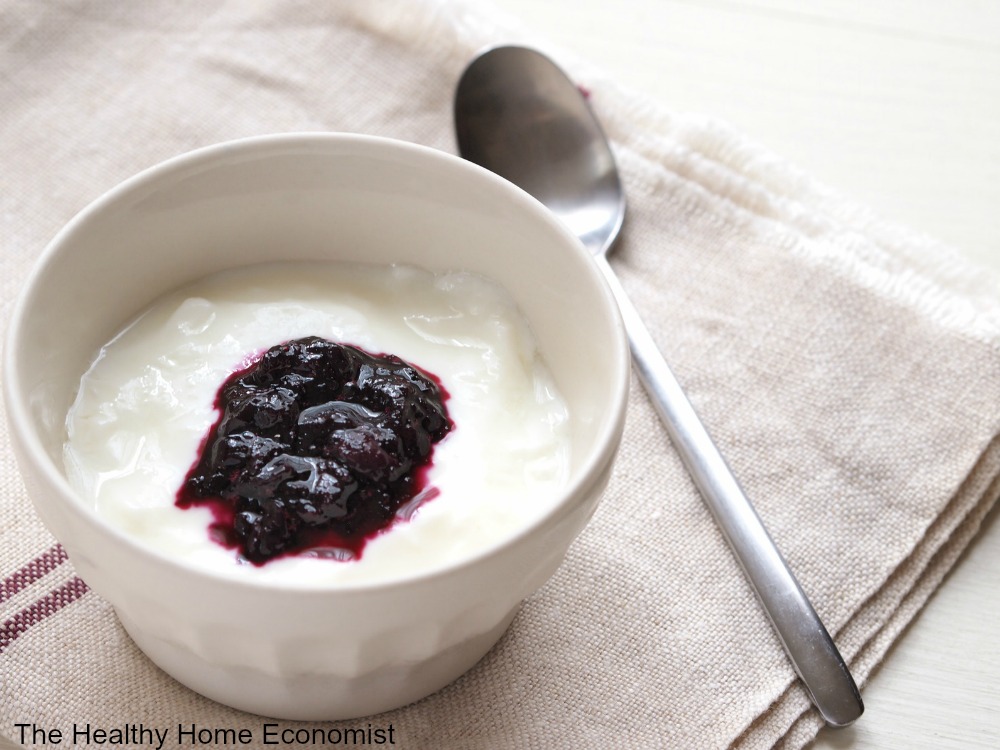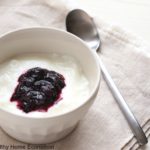 If you’ve watched even one of the videos from the 100+ Real Food video library available on this blog, you probably know that I have a microwave in my kitchen.
If you’ve watched even one of the videos from the 100+ Real Food video library available on this blog, you probably know that I have a microwave in my kitchen.
Do I use it for cooking or heating anything that my family consumes?
No. I haven’t used a microwave to heat or cook anything in many, many years. I much prefer my small countertop convection oven which doesn’t heat food unnaturally and creates carcinogens like a microwave does.
Why don’t I just remove the microwave from my kitchen then? The truth is that the microwave can function as a handy airtight cupboard and proves quite useful for other tasks besides cooking and heating believe it or not.
I mentioned in one of my Real Food videos that I frequently use it for airtight, room temperature storage of freshly baked bread, cookies, and other baked goods.
It also works very well for making homemade raw yogurt. It is, of course, made from unpasteurized milk.
What about Greek yogurt? Is Greek yogurt better? How about the similar German style cheesy yogurt known as Quark? While not necessarily healthier, if you make it yourself allowing sufficient time for probiotic inoculation, these are certainly a nutritious choice! It is ultimately a personal preference as long as the yogurt is fermented properly.
If you don’t have access to raw yogurt, whether regular or Greek, then you don’t know what you’re missing. Pasteurized yogurt even if organic pales in comparison to the digestibility and nutrient value of raw yogurt, so if you are able to snag some raw milk from a local farm, here’s how to make it into raw yogurt.
While the recipe below works fine using the microwave as the incubator, yogurt made in a slow cooker is more dependable in texture.
*This helpful recipe idea was given to me by my friend Cynthia Calisch, who has passed away. May she rest in peace.

Raw Yogurt Recipe
How to make raw yogurt using the microwave as the perfect incubation unit (turned off). When raw, yogurt has a pleasant drinkable style texture compared with scoopable heated yogurt.
Ingredients
- 1/4 cup Plain, whole milk yogurt preferably organic and grass-fed
- 3 3/4 cups Raw cow or goat milk preferably grass-fed
Instructions
-
Scoop 1/4 cup of the plain whole milk yogurt into a clean, wide mouth, glass mason jar (I like these). After you've made raw yogurt one time, you can use your own raw yogurt as the starter for subsequent batches.
-
Warm the raw milk on the stove to between 105 - 117F. No enzymes or nutrition is lost heating to this temperature but the warmed milk enables the yogurt culture to "take" better than room temperature raw milk.
-
Pour about half a cup of the warmed milk into the mason jar and mix with the yogurt.
-
Pour the remaining warmed milk into the mason jar, stir and close the lid tightly.
-
Wrap the mason jar in a thick hand towel, secure with a rubber band and place inside your microwave closing the door. Leave the light in the microwave on to keep a bit of warmth inside.
-
In 24 hours, open the microwave and voila! You will have yourself a lovely quart of raw yogurt!
More Information








I just tried this recipe yesterday and am now enjoying my yummy yogurt. This was by far, the easiest method I have used in making raw yogurt. Thanks, for posting this! I will definitely be using this recipe from now on. :O)
wow this looks so good! I never thought of using the microwave, I am going to try this out and i will report back 🙂
I tried this and ended up with something that doesn’t look much like yogurt. The jar is filled with whey, with a thick chunk of white at the bottom and floating white on top. Is that still edible?
I’ve done this before and the answer is YES. It’s definitely edible. I strained it through a dish towel and was left with delicious Greek style yogurt.
Help! Okay, I think I confused your instructions of waiting 24 hours, and the instructions of Nourishing traditions to keep it at 100 degrees. I warmed the raw milk, and stuck it in a 100 degree oven with the starter. After about 18 hours I checked it and it started to separate and become a bit chunky, though not completely curdled. I tasted it and it’s a bit sour. What have I created? Can I strain it or something?
Can you tell us more about the countertop convection ovens? When our microwave broke last year, I threw it away and breathed a sigh of relief. I got my kids switched over to other methods of reheating…. and then my husband brought home another microwave. Argh. I dare not break another microwave, er, I mean wait for this one to break without having some alternate convenient countertop appliance ready to take its place.
I’m very new to all of this so forgive my ignorance…I have access to low temp pasteurized milk but not raw…are you guys getting the “for pet consumption” milk? I’m assuming that label is “legal” so is that what I should be looking for?
It’s great for disinfecting the damp kitchen sponge! 1-2 minutes all kinds of germs are killed. Makes me wonder what it does to the food. I am trying to use it less and less. Except for weekly sponge cleaning, 🙂
Sarah i hate to tell you but a microwave is not air tight. It has open vents and a exhaust fan. I have learned a lot from you, THANKS. I guess i have been heating my milk more than is needed for making yogurt, i have been heating it to 180 and then cooling to 110-100 before adding my culture, of course i don’t have access to fresh whole milk at this time. But i am in the process of making my annual maple syrup and sugar, mmmmmmmmm good!
Scott
I love the title of this post! After a split-second of puzzlement, even before reading the post I figured it out. I will be trying this. 🙂
I make my raw milk yogurt absolutely the same way, but I use oven with the light on instead. I have also tried making sour cream this way. Here is what I did:
Heated up the raw cream to 115F, add a little TJ’s organic yogurt, wrapped it and put in the oven with the light on. After 8 hours I checked it and nothing happened. So I thought something went wrong. I added a little kefir in there and let it stand on the counter for a day. I became thicker but was still too liquid. So I transfered it to the fridge thinking to use it in smoothies. The next day when I open the jar, I found, to my surprise, the creamiest sour cream ever. There was a liitle whey on the bottom, but the top layer taste amazing and was extrmely smooth! Not sure what worked at the end, but my next batch I am making the same way